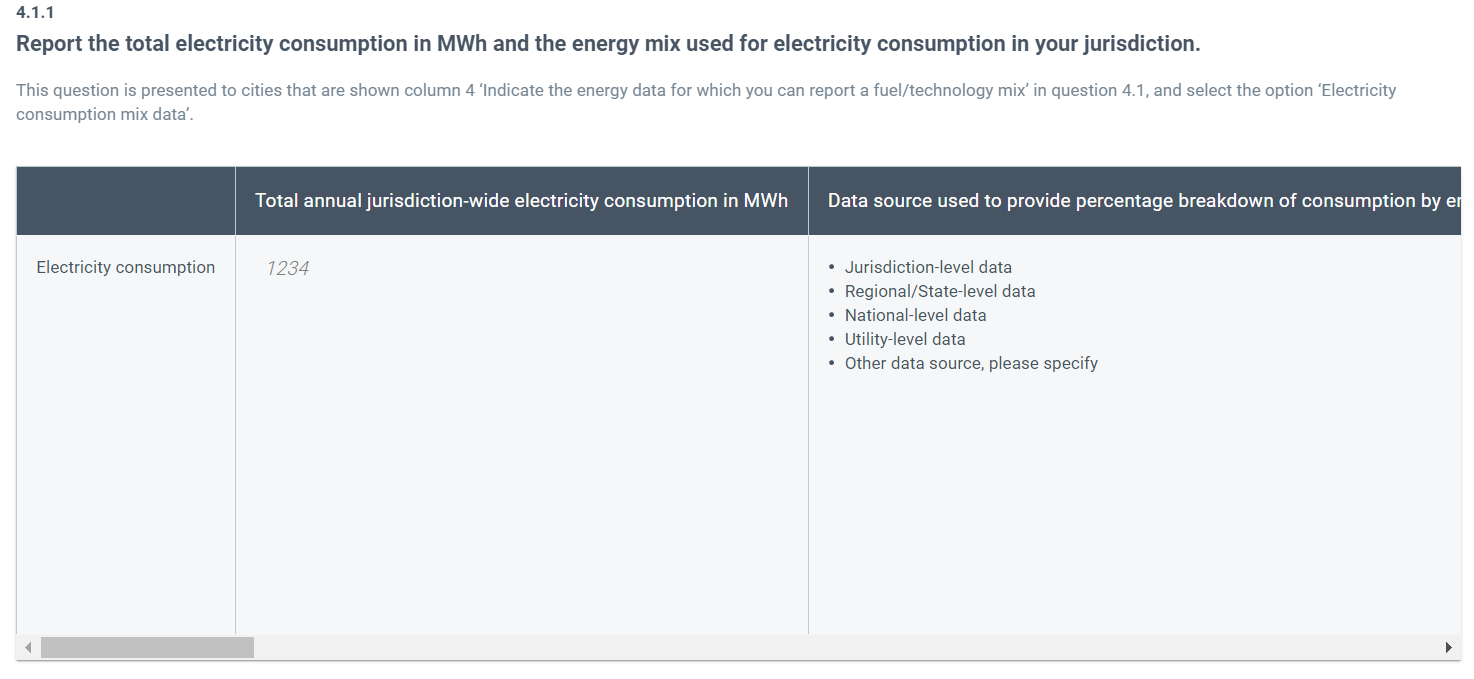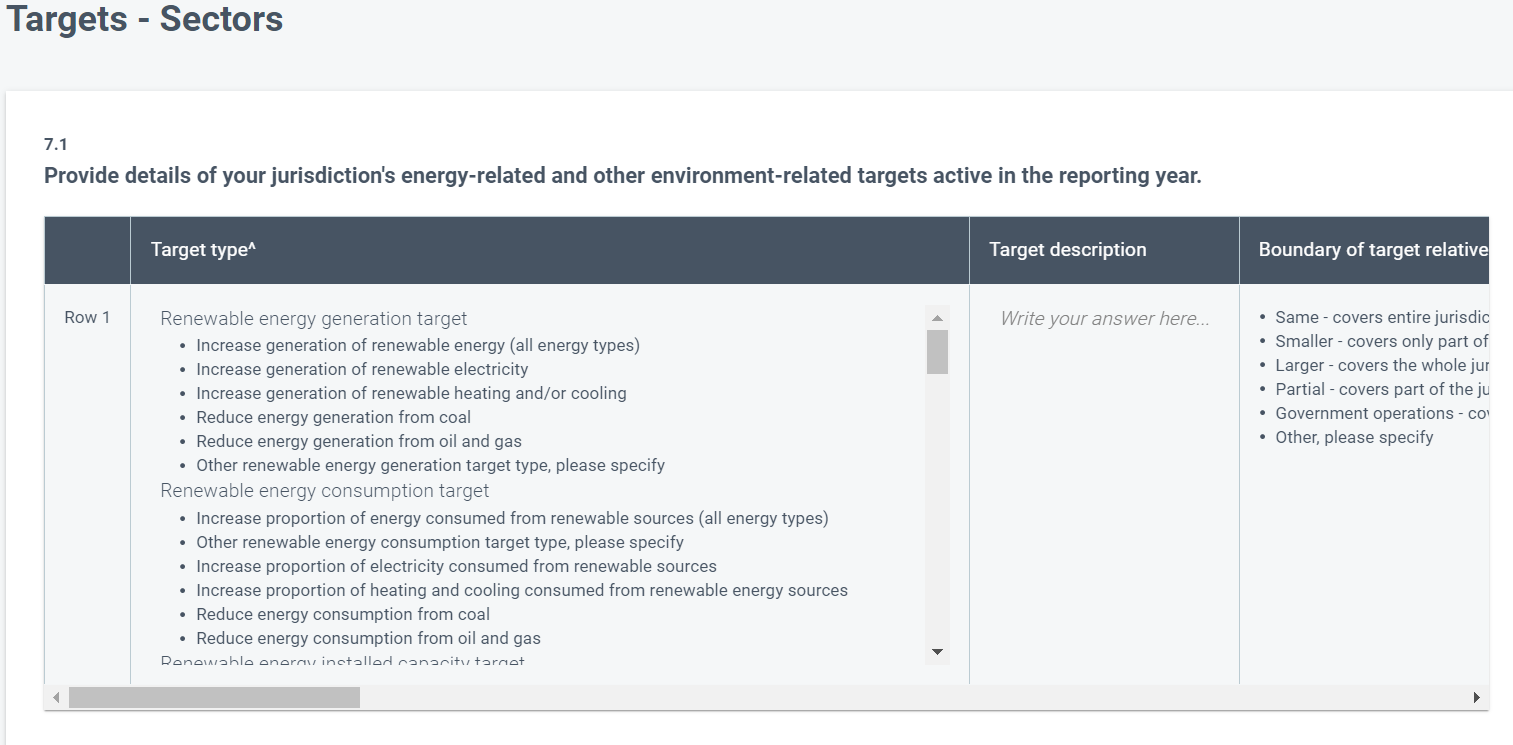CoM SSA sur le Plan d’action pour l’accès à l’énergie durable et le climat (PAAEDC) est un cours
-
MODULE 1 : Définir le contexte
-
Leçon 1.1 : Présentation de l’initiative CoM SSA2 Topics|1 Quiz
-
Leçon 1.2 : Introduction au PAAEDC3 Topics|1 Quiz
-
Leçon 1.3 : Changement climatique et villes africaines2 Topics|1 Quiz
-
MODULE 2 : Pilier Atténnuation du PAAEDC
-
Leçon 2.1 : Concepts clés de l’atténuation du changement climatique1 Topic|1 Quiz
-
Leçon 2.2 : Introduction au pilier Atténuation2 Topics|1 Quiz
-
Leçon 2.3 : Processus d’élaboration du PAAEDC pour le pilier Atténuation1 Topic
-
Leçon 2.4 : Inventaire des émissions : émissions de GES4 Topics|1 Quiz
-
Leçon 2.5 : Réalisation d’un inventaire de référence des émissions (IRE)3 Topics|1 Quiz
-
Leçon 2.6 : Outils nécessaires à la réalisation d'un IRE2 Topics
-
Leçon 2.7 : Définir des cibles d'atténuation2 Topics|1 Quiz
-
Leçon 2.8 : Planification des actions d'atténuation2 Topics
-
MODULE 3 : Le pilier Accès à l’énergie du PAAEDC
-
Leçon 3.1 : Concepts clés de l’accès à l’énergie1 Topic|1 Quiz
-
Leçon 3.2 : Introduction au pilier Accès à l’énergie3 Topics|1 Quiz
-
Leçon 3.3 : Processus d’élaboration du PAAEDC pour le pilier Accès à l’énergie1 Topic|1 Quiz
-
Leçon 3.4 : Collecte de données3 Topics|1 Quiz
-
Leçon 3.5 : Développer une évaluation de l'accès à l'énergie (EAE)2 Topics|1 Quiz
-
Leçon 3.6 : Définir une vision et des cibles relatives à l’accès à l’énergie3 Topics|1 Quiz
-
Leçon 3.7 : Planification des actions pour l’accès à l’énergie3 Topics|1 Quiz
-
MODULE 4: Le pilier Adaptation du PAAEDC
-
Leçon 4.1 : Concepts clés de la l'adaptation au changement climatique1 Topic|1 Quiz
-
Leçon 4.2 : Introduction au pilier adaptation2 Topics|1 Quiz
-
Leçon 4.3 : Processus d’élaboration du PAAEDC pour le pilier Adaptation1 Topic|1 Quiz
-
Leçon 4.4 : Réalisation d’une évaluation des risques et des vulnérabilités (ERV)1 Topic|1 Quiz
-
Leçon 4.5 : Définition d’une vision d’adaptation et des cibles sectorielles2 Topics|1 Quiz
-
Leçon 4.6 : Planification des actions d'adaptation2 Topics|1 Quiz
-
MODULE 5: Étapes à suivre avant de mettre en œuvre votre PAAEDC
-
Leçon 5.1 : Les prochaines étapes relatives aux actions prioritaires1 Topic|1 Quiz
-
Leçon 5.2 : Catégorisation des actions visant à permettre d’accéder aux financements extérieurs2 Topics|1 Quiz
-
Module 6 : Communication de votre PAAEDC
-
Leçon 6.1 : Stylique de votre PAAEDC3 Topics|1 Quiz
-
Leçon 6.2 : Communication de votre PAAEDC aux parties prenantes clés1 Topic|1 Quiz
-
MODULE 7: Reporting de votre PAAEDC
-
Leçon 7.1 : Introduction au reporting de votre PAAEDC3 Topics|1 Quiz
-
Lesson 7.2: Introduction to reporting the mitigation pillar4 Topics|1 Quiz
-
Lesson 7.3: Introduction to reporting the adaptation pillar3 Topics|1 Quiz
-
Lesson 7.4: Introduction to reporting the access to energy pillar3 Topics|1 Quiz
-
MODULE 8: Integrating your SEACAP into existing planning processes
-
Lesson 8.1: Integrating your SEACAP actions into local level plans1 Topic|1 Quiz
-
CONCLUSION
How to report on the access to energy pillar using CDP-ICLEI track
14 February 2025
GCoM jurisdictions are required to report on at least one indicator from their GCoM Regional/National Covenantu2019s chosen energy attribute.
nnThese attributes are:
The energy questions in Section 4 (4.1, 4.1.1, 4.1.2, 4.1.3, 4.1.4, 4.2, 4.3, 4.4) have been designed to align with the reporting requirements of multiple projects and/or initiatives, principally the u2018Assessmentu2019 phase of the Energy Access and Poverty Pillar. The u2018Planu2019 phase elements can be reported in questions 8.1/8.1.1, and in 9.1/9.2 (in two final columns GCoM cities will be requested to indicate if any actions reported address energy-related issues and the related indicators), while the ‘Targetu2019 elements are addressed in Question 7.1.


This question is mandatory to be compliant with the GCoM Energy Access and Poverty Pillar badge. All mandatory columns (highlighted with ^ symbol) must be answered appropriately.
nHere are some helpful tips on how to avoid common mistakes when completing the mandatory columns:
n| Mandatory columns | Avoiding common mistakes |
|---|---|
| Column 1 - Target type | Please select a target type according to your regionu2019s requirements. |
| Column 3 - Boundary | The boundary shall be the same or larger than the community boundary. If it is smaller or partial, please explain the exclusion in the text box.nn |
| Column 5 - Base year | Please specify the base year. The base year shall be equal or prior to the reporting year. |
| Column 6 - Metric used to measure target type if a renewable energy target | To report compliance against the requirements of 'Units' and 'Target Setting', a percentage must be selected as a metric in column 6 (if a renewable energy target) or written as a percentage in column 7 (if not a renewable energy target). This is to allow the comparison of percentage from the target year in relation to the base year. |
| Column 7 - Metric used to measure target type if not a renewable energy target | To report with compliance against the requirements of 'Units' and 'Target Setting', a percentage must be selected as a metric in column 6 (if a renewable energy target) or written as a percentage in column 7 (if not a renewable energy target). This is to allow the comparison of percentages from the target year in relation to the base year. |
| Column 7 - Metric used to measure target type if not a renewable energy target | To report with compliance against the requirements of 'Units' and 'Target Setting', a percentage must be selected as a metric in column 6 (if a renewable energy target) or written as a percentage in column 7 (if not a renewable energy target). This is to allow the comparison of percentages from the target year in relation to the base year. |
| Column 8 - Metric value in base year | Please report the metric value in base year (the quantitative target results). |
| Column 9 - Target year | Please specify the target year. The target year shall be equal or post to the reporting year. The GCoM recommends using 2030 as the target year in alignment with SDG 7. |
| Column 10 - Metric value in target year | Please ensure that in column 10 you report the increase/decrease as a percentage change from the base year. For example: a 50% reduction/increase relative to 2010. |
